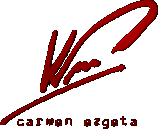Himna - Hymn - National anthem: Hrvatska - Croatia — Lijepa nasa domovino [ MIDI ]
HRVATSKA CROATIA
Staro hrvatsko pismo glagoljica — The Croatian Glagolitic Alphabet
The Croats using the Glagolitic alphabet were the only nation in Europe who was given a special permission by Pope Innocent IV (in 1248)
to use their own language and this script in liturgy. More precisely, this permission had formally been given to the bishop Philip of Senj.
However, special care accorded by the Vatican to the Glagolitic liturgy in subsequent centuries (even by publishing several Glagolitic missals in Rome),
shows that this privilege applied to all Croatian lands using the Glagolitic liturgy, mostly along the coast.
As is well known, the Latin had been the privileged language in religious ceremonies in the Catholic Church
until the 2nd Vatican Synod held in 1962-1965, when it was decided to allow vernacular national languages to be used in the Catholic liturgy instead of Latin.
It is interesting that even today the Glagolitic liturgy is used in some Croatian churches.
In 1252 the Pope Innocent IV allowed Benedictine Glagolitic monks in Omisalj on the largest Croatian island of Krk
to use the Croatian Church-Slavonic liturgy and the Glagolitic Script instead of Latin.
The Rules of St. Benedict, written in Croatian Glagolitic Script in 13th or14th century,
are very probably the earliest known translation of Benedictine rules from Latin into a living language (Croatian Church-Slavonic).
Altogether 60 pages are preserved out of 70, that Benedictines had to know by heart.
We also know that Croatian Glagolitic Benedictines existed in the city of Krk, and on the island of Pasman near Zadar.
Even more peculiar was the existence of Benedictines on the island of Brac near Split, in Povlja, who used the Croatian Church-Slavonic liturgy,
and - the Croatian Cyrillic Script! It should be noted that members of the Benedictine monastic order were strict followers of the Latin liturgy
and of the Latin language and script everywhere in Europe - except in parts of the Croatian littoral.
According to rev. Ivan Ostojic, outstanding specialist on the history of benedictines in Croatia,
in 13th and 14th centuries Croatia had as many as 70 known benedictine monasteries for monks, and more than 20 for nuns.
![]()
![]()
![]()
![]()
![]()
![]()
![]()

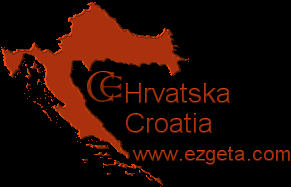
Lijepa je ova zemlja
meni najdraza
Nigdje toliko algi
kao u uvali moga djetinjstva
Livade
i konji nesedlani...
Koliko rijeka i slapova...
Dodji, prijatelju...
Jure Kastelan
(1919 - 1990)
![© Carmen Ezgeta - Croatia: Veliki umovi i pjesnici - Great Minds & Poets : Nikola Tesla (b. 1856 Croatia - d. 1943 USA) [inventor, electrical engineer, and scientist ] ; Lavoslav (Leopold) Ružička (b. 1887 - d. 1976) [ Nobel laureate in 1953 (was a Nobel Prize winner in chemistry) ]; Tin Ujević (1891 - 1955); Ivan Goran Kovačić (1913 - 1943); Dobriša Cesarić (1902 - 1980): DragutinTadijanović (1905 - 2007); Antun Gustav Matoš (1873 - 1914) © Carmen Ezgeta - Croatia: Veliki umovi i pjesnici - Great Minds & Poets : Nikola Tesla (b. 1856 Croatia - d. 1943 USA) [inventor, electrical engineer, and scientist ] ; Lavoslav (Leopold) Ružička (b. 1887 - d. 1976) [ Nobel laureate in 1953 (was a Nobel Prize winner in chemistry) ]; Tin Ujević (1891 - 1955); Ivan Goran Kovačić (1913 - 1943); Dobriša Cesarić (1902 - 1980): DragutinTadijanović (1905 - 2007); Antun Gustav Matoš (1873 - 1914)](./Croatia_Poets.gif)
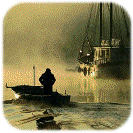

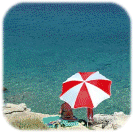
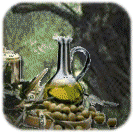

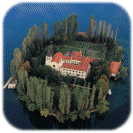



![© Carmen Ezgeta - Croatia: Krapinski neandertalac - The Krapina Neanderthals (Homo sapiens neanderthalensis); Dalmatinski pas - Dalmatian dog - Dalmatiner Hunde; PENKALA - Prvo nalivpero na svijetu! - The first fountain pen in the world!; Vučedolska golubica (3000 g. p. Kr. B.C. - 2200 g. p. Kr. B.C.) - The famous Vucedol dove, the symbol of Vukovar (Prehistoric Archaeology in Croatia); Boškarin - The Istrian Bull Boskarin; Croatia - Domovina kravate - Homeland of the Cravat [photo: Pula - ( Istra ) - Arena]; Bjeloglavi sup - Gyps fulvus (Cres & Kvarner) © Carmen Ezgeta - Croatia: Krapinski neandertalac - The Krapina Neanderthals (Homo sapiens neanderthalensis); Dalmatinski pas - Dalmatian dog - Dalmatiner Hunde; PENKALA - Prvo nalivpero na svijetu! - The first fountain pen in the world!; Vučedolska golubica (3000 g. p. Kr. B.C. - 2200 g. p. Kr. B.C.) - The famous Vucedol dove, the symbol of Vukovar (Prehistoric Archaeology in Croatia); Boškarin - The Istrian Bull Boskarin; Croatia - Domovina kravate - Homeland of the Cravat [photo: Pula - ( Istra ) - Arena]; Bjeloglavi sup - Gyps fulvus (Cres & Kvarner)](./Croatia_LUX.gif)
![© Carmen Ezgeta - Croatia: Povijest Poreča - History of Poreč [ Parenzo ] & Brijuni ( Istra - Istria ) ( POREČ : A visit to the old town (Porec is 2,000 years old) is a must, due to numerous historical sites, particularly the 6th century Euphrasian Basilica which is wonderfully preserved and is well known for its beautiful gold mosaics. The entry to the church is free, although a small donation is much appreciated. ) ( BRIJUNI : The most stratified archaeological site of Brijuni is the fortification (2nd-1st cc. B.C.- 15th-16th cc. A.D.)- castrum- located on the western coast of the island. ) © Carmen Ezgeta - Croatia: Povijest Poreča - History of Poreč [ Parenzo ] & Brijuni ( Istra - Istria ) ( POREČ : A visit to the old town (Porec is 2,000 years old) is a must, due to numerous historical sites, particularly the 6th century Euphrasian Basilica which is wonderfully preserved and is well known for its beautiful gold mosaics. The entry to the church is free, although a small donation is much appreciated. ) ( BRIJUNI : The most stratified archaeological site of Brijuni is the fortification (2nd-1st cc. B.C.- 15th-16th cc. A.D.)- castrum- located on the western coast of the island. )](./Croatia_Arheologija.gif)
NIKOLA TESLA
(1856 - 1943)
THE GENIUS WHO LIT THE WORLD
2006 — Godina Nikole Tesle (UNESCO, Hrvatska) i 150. godisnjica rodjenja
2006 — The Year of Nikola Tesla (UNESCO, Croatia) and 150th Anniversary of his birth
Nikola Tesla se rodio 10 srpnja 1856. u Smiljanu, Hrvatska, a umro je 7 sijecnja 1943. u New York-u, USA
Nikola Tesla was born on July 10, 1856 in Smiljan, Croatia. Tesla died on January 7th, 1943 in the Hotel New Yorker, New York, USA
Nikola Tesla: "Ne zalim sto su drugi pokrali moje ideje, ali zalim sto nemaju svoje."
Nikola Tesla: "I don't regret that others stole my ideas. I am sorry they don't have their own."
![]() Slavoljub Eduard Penkala (1871 – 1922): Mehanicka olovka — The mechanical pencil (1906)
Slavoljub Eduard Penkala (1871 – 1922): Mehanicka olovka — The mechanical pencil (1906)
![]() Faust Vrancic Verantius (1551 - 1617) (circa 1551 – 1617): Padobran — Parachute (1615)
Faust Vrancic Verantius (1551 - 1617) (circa 1551 – 1617): Padobran — Parachute (1615)
[Machinae Novae (Venice 1615 or 1616) - Homo Volans (Plate 38)]
![]() Antun Lucic (1855 - 1921): Prva naftna busotina — Spindletop (1901)
Antun Lucic (1855 - 1921): Prva naftna busotina — Spindletop (1901)
![]() Ivan Lupis (Luppis) - Vukic (Giovanni Luppis) (1813 - 1875): Torpedo — The first self-propelled torpedo (1860)
Ivan Lupis (Luppis) - Vukic (Giovanni Luppis) (1813 - 1875): Torpedo — The first self-propelled torpedo (1860)
![]() Ivan Vucetic (Juan Vucetich) (1858 - 1925): Daktiloskopija — Dactyloscopy (fingerprint identification) (1891)
Ivan Vucetic (Juan Vucetich) (1858 - 1925): Daktiloskopija — Dactyloscopy (fingerprint identification) (1891)
![]()
![]()
![]()
![]()
![]()
![]()
![]()
Lavoslav Ruzicka
(1887 - 1976), Hrvatska - Croatia, The Nobel Prize in Chemistry 1939 
Ivo Andric (1892 - 1975), Hrvatska - Croatia, The Nobel Prize in Literature 1961 
Vladimir Prelog (1906 - 1998), Hrvatska - Croatia, The Nobel Prize in Chemistry 1975 
![]()
![]()
![]()
![]()
![]()
![]()
![]()
![]()
![]()
![]()
![]()
![]()
![]()
![]()
![]() Sveti Nikola i Krampus - St Nicholas and Krampus
Sveti Nikola i Krampus - St Nicholas and Krampus
![]() Igras se svakog dana... - Poema XIV - Juegas todos los días... - Every Day You Play...
Igras se svakog dana... - Poema XIV - Juegas todos los días... - Every Day You Play...
![]() Zaboravit cemo ga, srce... - Heart, we will forget him
Zaboravit cemo ga, srce... - Heart, we will forget him
![]() Poezija napustanja - Poetry of Departures
Poezija napustanja - Poetry of Departures
![]() Do You Know Where You're Going To?
Do You Know Where You're Going To?
![]() These Are The Days Of Our Lives
These Are The Days Of Our Lives
![]() Voda koja nije za piće - Agua que no has de beber - Don't take that which is not rightly yours
Voda koja nije za piće - Agua que no has de beber - Don't take that which is not rightly yours
![]() Et si tu n'existais pas - If you did not exist
Et si tu n'existais pas - If you did not exist
![]() Plesi dok sva ljubav ne okopni - Dance Me To The End Of Love
Plesi dok sva ljubav ne okopni - Dance Me To The End Of Love
![]() La donna é mobile (Rigoletto) - Zena je varljiva - A women is fickle
La donna é mobile (Rigoletto) - Zena je varljiva - A women is fickle
![]() (ulovili ste me gospodjo u zamku)
(ulovili ste me gospodjo u zamku)
![]() LXVI - Ne volim te zato sto te volim - No te quiero sino porque te quiero - I do not love you — except because I love you
LXVI - Ne volim te zato sto te volim - No te quiero sino porque te quiero - I do not love you — except because I love you
Sabrás que no te amo y que te amo - Je t'aime parce que je t'aime et voila tout
San u kamenu - The dream in stone ![]()
Always Look On The Bright Side Of Life ![]()
Where's hot for '06? In our first annual, semiscientific poll, we surveyed our staffers and writers. The result:
this A-list of next year's must-see places.
1. Croatia:
So hot in 2005 that it was hard to book a flight. For next year, Kornati National Park tops our list.

![]()
![]()
![]()
![]()
![]()
![]()
![]()
![]()
![]()
![]()
![]()
![]()
![]()
![]()
PROTO-LANGUAGE AND SARASVATI CIVILIZATION
ca. 5750 - 4200 BC
(Proto-Croats in India)
Indo-Iranian origin of the non-Slavic name HRVATI (= Croats), is accepted nowadays even by persistent slavists (although according to them Croats must be Slavs).
Dr. S.K. SAKAC (whose reprint book is just about to be published) has done the most excellent research on the origin of Hrvati (Croats).
According to him, the key point is an East-Persian province (satrapy) called Harauwatya, under ancient Achaemenids, in today's Afghanistan.
Early Persian and Elamite written texts (Avesta and others) mentioned this province, in historical sequence, like Harahvati, Harauwatya and Harraovatis (Curic, 1991).
In old Indian Vedic texts the most similar word from pre-historic times was Sarasvati, whose name is mentioned in early Indo-European literature
(the RgVeda) about sixty times. Until the 80's, the location and even the very existence of the land Sarasvati was not clear, and it was considered as myth and legend. Recent
discoveries by modern technology almost fully proved the historical foundations of nation Sarasvati, and its culture, also its period of existence and its time,
which is much older than previously thought. It existed at the same time, or even earlier, than Sumerian culture and Egyptian Pharaohs, that is 3750 – 2200 BC.
The main discoveries about that were published in India, by Prof. Dr. S.R.Rao ("Dawn and Development of the Indus Civilization", 1991)
and by Dr. Rajaram and Frawley in 1995 ("Vedic Aryans and the Origins of Civilization").
Here follows some short extracts from these books, which are particularly significant regarding the early origin of Hrvati (Croats).
1.
Discovery of the river Sarasvati and land Vaeyah, by Satellites. In order to prove or dismiss the legends about Sarasvati, detailed satellite photographs of land
around Afghanistan, Pakistan and Punjab were made Photos were taken by infrared rays, which can detect buried archeological places under the earth,
sand or sea. There were no important findings of more advanced civilizations before pre-history, in Afghanistan and neighboring Pakistan.
But many convincing locations of a prehistoric civilization were found further east, in North India, particularly in the big desert of Thar,
now in the Indian provinces of Rajastan and Gujarat.
Under huge sand dunes there are, until recently unknown, ruins and walls of a dozen prehistoric towns, which are located mainly along the actual dry bed
of river Sarasvati, which was at that time the main and biggest Indian river, bigger than Indus and Ganges. Due to the melting of huge Tibetan and Himalayan
glaciers after the Ice Age, 9000 - 12000 years ago, river Sarasvati was flowing with much water down the snowy Himalayan slopes in a southwest direction,
through the green and fertile VAEYAH valley, to the Indian ocean. It entered the sea with 7-km wide bed at peninsula Kutch near Bombay.
According to Mahabharata, the town of Dwaraka was here, and was "swallowed by the ocean"; Krishna saved its citizens.
All this was considered to be a legend. But now, satellite photographs found that town at the bottom of the sea, close to the mouth of Sarasvati.
It is already being examined by under-water-archaeologists. Dwaraka was built around 3000 BC and it sunk in 1500 BC.
People of Sarasvati (valley) used to call their land Aryane Vaeyah (Homeland of Aryans), and their first known ruler was Yam Raha
(in early Persian literature known as Yima Ksheta). The texts of Rg Veda, and scanty archeological findings from India,
show that early Aryan ancestors were living here even before VII-V millenium, so today we can trace the history of Indo-Aryans 9000 years backwards.
2.
Decoding of early Aryan script and language. The second key turning point in understanding early Aryan prehistory was done by systematic decoding,
till now enigmatic scripts from Harappa and Sarasvati civilizations. Only in the 90s was this script, as well as language of early Indian texts,
translated and understood. Texts on clay seals as old as the first Sumerian and Egyptian texts have been translated, which gave quite unexpected results
to the historians. They had thought that Dravidians lived in that area, and that Aryans came about 12 century BC, but these old Indian texts and seals
are already written in old Sarasvati-language, very similar to Vedic language. Today four early-Aryan languages are known:
1. The best known is classical Sanskrit (Samskrita),
2. An earlier one is Indo-Vedic (12th - 5th century BC),
3. In actual century in Kurdistan were found very scanty prehistoric texts of Mitanni (16th - 12th century BC) which are very similar
to early Aryan's language of Vedas,
4. Today's finding of the oldest Aryan pre-language Sarasvati is from 37th - 22th century BC, simultaneous with Sumerian and early Egyptian language.
The similarities and connection with early Croatian language are shown in the next comparative numerical sequences:
SARASVATI (North India - actual desert of Thar 37 - 22 century BC):
1 = aeka, 3 = tra, 4 = chatus, 5 = penta, 7 = happta, 9 (?), 10 = dasa, 20 = dvadasa, 100 = sata.
MITANNI (Kurdistan, 16th - 12th century BC):
1 = aika, 3 = tera, 4 (?), 5 = panza, 7 = satta, 9 = na, 10 (? – further unknown).
INDO-VEDIC (Pakistan, 12th - 5th century BC):
1 = eka, 3 = tri, 4 = chatur, 5 = panca, 7 = sapta, 9 = nava, 10 = des, 20 = dvides, 100 = satam.
Veyska zayk
(now present as the most archaic Croatian tongue of the interior villages on Island KRK in the Adriatic Sea, Croatia):
1 = eni, 3 = tari, 4 = cetyr, 5 = pet, 7 = sedaan, 9 = devet, 10 = deset, 20 = dvayset, 100 = stuo.
In Sarasvati there are more important words which are very similar to this old Croatian, for example:
bhrata = brat (brother), gatha = ganga (hymn), bhesha = besjeda - older bjesyd (speak), devas = djeva (girl - goddess), angira = andjeo - older angjel (angel),
visa = ves - selo (village), maria = marjan (hero), vaeyah = zavicaj - older veyaan (homeland), etc
Between 2000 and 1500 BC, when Himalayan glaciers melted, river Sarasvati dried up, the Early Aryan green homeland Vaeyah became recent Thar Desert.
Old civilization Sarasvati was destroyed by hunger and lack of water, but some of these Indo-Aryans moved westwards, close to the river Indus
and the mountains of Afghanistan, where ancient state Harauwatya was formed. Others moved even further towards Kurdistan and upper Mesopotamia,
where the early Aryan kingdom Hurrwurtu, with Mitannian dynasty of Maryanni developed. In that prehistoric time, furthest to the West, the Celts arrived in Europe.
Their language and middle age traditions are closest to the early Indo-Aryans. Later, in a second wave, Aryan Persians settled down in Elamitic Arran,
after 12 century BC, thus breaking connections between Indo-Aryans and western early Aryans.
The later arrival of half-Aryan Germans, and of others enlarged this break.
3.
Importance of these discoveries for the origin of HRVATI (Croats) Due to the lack of archaeological proofs and of written documents earlier than 12th century BC,
the origin and prehistory of early Aryans has been an issue of different ideological and political manipulations. On such a manner Germanic nazis until World War 2
were propagating their myth that "pure-blooded Aryans" should be blonde-haired Nordic Germans. Afterwards, in post-war euphoric period,
anti-fascists and Marxists felt into another extreme with unproved theory insisting that northern Charpatian swamps of "Mother Russia",
are not only the original homeland of all Slavs (including Croats), but furthermore, there should be even an earlier homeland of all Indo-Europeans!
The recent material discovery of early Aryan cities, pre-historic scripts, and language Sarasvati in distant India, many thousand of years earlier than any
mention of Germans or Slavs (then were still at the early Cromagnon culture), clearly show the nonsense of such manipulations with the term of Aryans
and early Croatian history, for current political trends. After those discoveries, nazi's and Marxist's "history" of Indo-Europeans, as results of political and
ideological propaganda, distorted history itself. On the contrary, recent "outsiders", who have been on the very margin of the European and world geopolitics,
are proved to be the closest to the IndoVedic origins. Even through present world's mighty nations will not be pleased with these facts, very soon by the objective
scientific documentation they will be led to accept the facts that the closest descendants of early Aryans in Europe are especially:
Balkanic Croats, Celtic Irishmen and nomadic Gypsies!
This is the reason that prehistory of original early Croats (Hrvati), as carriers of Croatian name and later organizers of thir states,
now is becoming much more clear and logical. The first Croatian ancestors became from North India and not only from Persia,
nor from the Carpathian area in Europe. In the beginning, 3700 BC or earlier, these pre-Croats were part of a common early-Aryan ethno-group Sarasvati in India.
Due to the change of climate they emigrated westwards in ancient Afghanistan (Harauvatya) and Kurdistan (Hurrwurtu, Huratina) and then reached ancient
Tanais on the Azov Sea, where was inscribed Synodos Horouathon (= the first Croatian Parliament). In the early middle age they came to White Croatia
(Bijela Hrvatska) in Carpathians, and then in southern Adriatic Croatia (actual Hrvatska), where we persisted till now.
![]()
![]()
![]()
![]()
![]()
![]()
![]()
![]() Please Sign My GuestBook View My Old GuestBook
Please Sign My GuestBook View My Old GuestBook ![]()
Carmen Ezgeta (ponesto o meni - something about me)
LOGO — www.EZGETA.com
Web dizajn, izrada web stranica, grafika, animacija, videa... itd. — CARMEN EZGETA
Webmaster, Web page design; graphics, animations, videos... etc. —
CARMEN EZGETA

Prezime EZGETA — Surname EZGETA
je najvjerojatije po podrijetlu motivirano zanimanjem: prvonositelj je bio po zanimanju EGZETA.
Tumacio je, objasnjavao i iznosio kriticka objasnjenja biblijskih i drugih vjerskih i pravnih tekstova.
Naziv EZGETA najvjerojatnije je izveden kracenjem naziva EGZEGETA,
od starogrcke rijeci EXEGETES (ἐξήγησις od ἐξηγεῖσθαι) = PROROK, PROPOVJEDNIK, TUMAC, UCITELJ, SAVJETNIK, GATALAC
(gl. e x e g e i s t h a i = pokazati put, voditi (voditi van), izloziti, objasniti, tumaciti itd.)
[ IZVORI: Dr. B. Klaic, Rjecnik stranih rijeci, Zagreb 1962, str.384; N. Majnaric i O. Gorski, Grcko-hrvatskosrpski rjecnik, Zagreb 1960, str.195;
E. Partridge, ORIGINS — A Short Etymolofical Dictionary of Modern English, New York 1983, pp.190.602. ]
Neka istrazivanja migracija EZGETA kazu da su EZGETA bili Grci koji su se sa otoka Krete,
prije nego sto je rimski vojskovođa Quintus Caecilius Metellus Creticus (c. 135 BC – late 50s BC) osvojio Kretu 69. pne - 69 BC,
odselili na Dalmatinske otoke, a odatle...
Ime CARMEN — Name CARMEN
CARMEN — latinski: PJESMA (Carmen, -inis, n.) / CARMEN
— Latin: SONG, TUNE, POEM (|noun| Carmen, Carminis Neuter)
and is also the root of the English word charm.
Iz istog korijena (Carmen) je izvedeno "Carmentis" ili "Carmenta" sto je naziv rimske boginje rodjenja i prorocanstva,
a "karma" znaci: "prorocanstvo - da svako bice snosi posljedice vlastitih djela"
te "univerzalni zakon izravnavanja, logika vjecne pravde, duhovne i moralne ravnoteze."
www.EZGETA.com — since 1998
Ezgeta.com je osobna visejezicna stranica poezije, umjetnosti, muzike, humora i misli...
Ezgeta.com is a Croatian multilingual personal site with poetry, art, music, humor and nice things...
Images, web content & design © carmen ezgeta
All Rights Reserved

Svidja li vam se moja Web stranica? Izaberite LOGO i postavite link na svoju Web stranicu. Hvala.
Do you like my Web - Site? Please link any of these LOGOS back to the address below it. Thank you.
| Poezija - Poetry & Lyrics | pjesnici i pjesme - Poets & Poems | Proza - Prose | MIDI kutak - Carmen's MIDI corner | mp3 LUX | Film - Movie | Galerija fotografija - Photo Gallery |
| Svemir - Cosmos | slusaj MUZIKU - listen to the MUSIC | Anegdote - Anecdotes |
| Anesteziologija, reanimatologija i intenzivno lijecenje - Anesthesiology, Reanimatology, Critical Care Medicine & ER |
| E-mailovi prijatelja - Friend's E-mails | Humor - Humour | Aforizmi... - Quotes... | 4 godisnja doba i blagdani - 4 Seasons, Holidays and Observances |
| Kviz - Quiz | midi - mpg - mp3 - exe... | Misli... - Nice Things... | FREE Gifs | Zrcalo - Mirror | Linkovi - Links | Sto je novo...?! - What's New...?! |
| Carmen Ezgeta (ponesto o meni - something about me) | Please Sign My GuestBook | View My Old GuestBook | Logo | Home | Exit |

![]()
![]()
![]()
![]()
![]()
![]()
![]()
SVJETSKI POZNATI IZUMITELJI — GREAT INVESTIONS & THEIR INVENTORS

Dobrodosli! Welcome!
© Copyright: photo(s), graphic arts, animation & design by Carmen Ezgeta
Hrvatska — Croatia — Kroatien — Kroatie — Croazia

|
Praznici, blagdani i neradni dani |
Holidays and Observances |
|
1. |
sijecanj - January |
||
|
6. |
sijecanj - January |
Sveta tri kralja |
Epiphany |
|
20. |
travanj - April |
||
|
21. |
travanj - April |
||
|
01. |
svibanj - May |
Praznik rada |
Labor Day |
|
30. |
svibanj - May |
Dan drzavnosti |
Statehood Day |
|
19. |
lipanj - June |
Tijelovo |
Corpus Christi |
|
22. |
lipanj - June |
Dan antifasisticke borbe |
Anti-Fascist Resistance Day |
|
5. |
kolovoz - August |
Dan domovinske zahvalnosti |
Homeland Thanksgiving Day |
|
15. |
kolovoz - August |
Velika gospa |
Assumption of Mary |
|
1. |
studeni - November |
||
|
18. |
studeni - November |
Dan sjecanja na zrtve |
Remembrance Day |
|
25. |
prosinac - December |
||
|
26. |
prosinac - December |
2025
